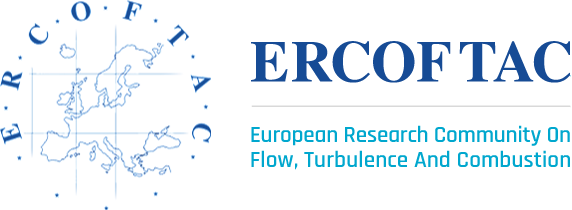Women of ERCOFTAC
Interview with Prof Taraneh Sayadi
Chair Professor of Scientific Computing; Director of Mathematical & Numerical Modelling Laboratory (M2N);
Conservatoire National Arts et Métiers (Le CNAM); Applied Mathematics & Statistics Department (EPN6)

Prof Taraneh Sayadi
- What is your academic background?
I have a BSc in Mechanical Engineering from Sharif University of Technology, an MSc from the Technical University of Munich, and a PhD from Stanford University. Before landing my permanent position in 2018, I spent some time as a researcher at Ecole Polytechnique, Imperial College London and RWTH Aachen University.
- What is your research specialism?
I have a solid background in the application of numerical methods to transitional and turbulent incompressible and compressible flows, gained during my PhD and early postdoctoral research. However, my research interests have shifted towards applied mathematics during my postdoctoral studies, and I am now primarily interested in data-driven hybrid and reduced-order models for such applications, as well as developing various model-based optimisation strategies for their design and control.
- What projects are you working on currently?
We are working on using generative AI-based models to model stochastic partial differential equations, with the aim of extracting either predictive approximative models or robust and cost-effective data assimilation frameworks capable of processing noisy experimental data. Additionally, we are developing ensemble-based variation techniques as a nonintrusive alternative to adjoint-based methods for high-dimensional optimisation problems, such as instability analysis and open-loop control.
- Was there a woman who inspired you to get into your field?
While I was at Stanford, I was always inspired by Maryam Mirzakhani. Not only did she become a professor at the institution, she also became the first woman to win the Fields Medal. She still inspires me today.
- What motivates you to work on fluid mechanics, or what you find fascinating about it?
In my opinion, fluid mechanics remains one of the most challenging applications in the engineering community. Due to the presence of phenomena such as flames, interfaces, shocks and various scales, the methods and algorithms for reduction and control, which are usually developed in the applied mathematics community, need to be adapted and improved constantly. Now, with the availability of new tools, namely AI-based architectures, the race for improvement has taken a different — and, I believe, very exciting — direction, allowing for multidisciplinary approaches and discussions.
- What advice would you give to young women wanting to get into STEM?
Diversity—both in life and in our field—is not just important, it's essential. Scientific progress often stems from bold, unconventional ideas, and exploring these ideas requires a range of perspectives. I believe that women, having faced and overcome significant challenges, bring a unique courage and resilience to their thinking and actions. This spirit is vital for driving science forward.
- What are the benefits of being a member of ERCOFTAC?
ERCOFTAC provides the perfect environment for scientific growth and networking. With its various Special Interest Groups (SIGs), it provides access to specific areas of cutting-edge research, offering a valuable resource for interested researchers. Additionally, its outreach programmes for younger researchers could help them design their careers as they wish.
